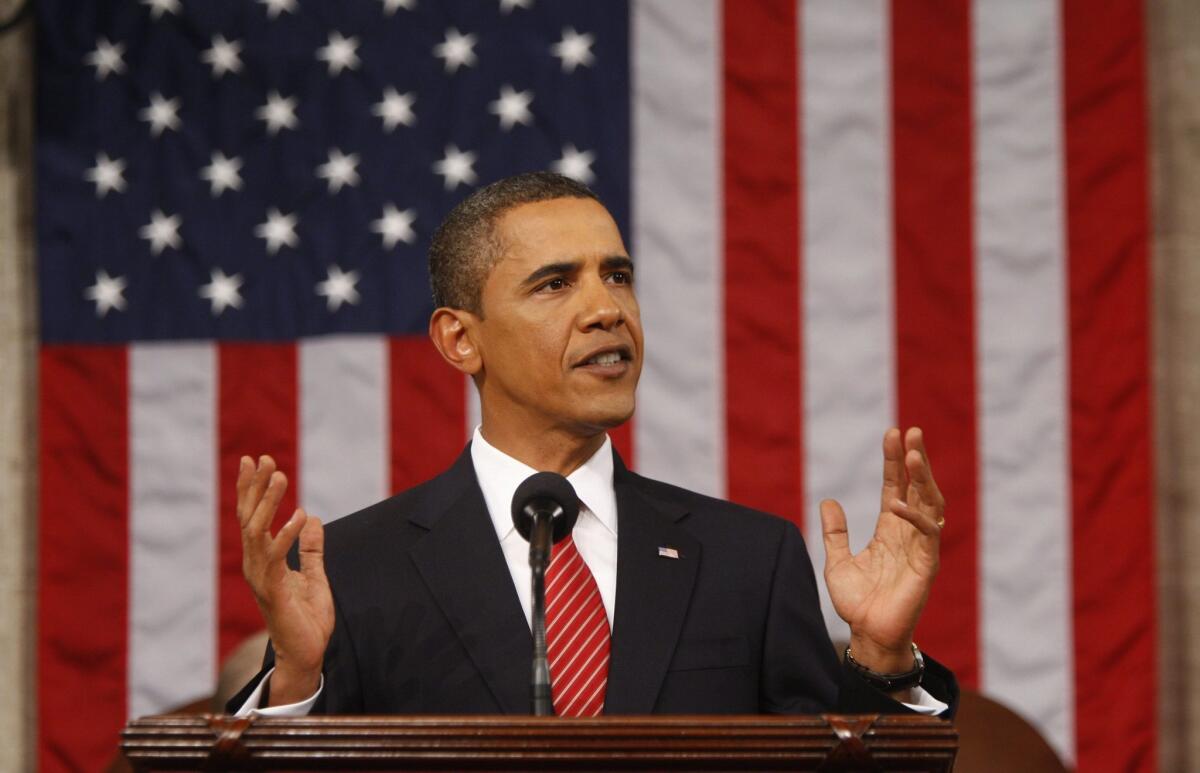Health spending likely to keep rising with or without Obama’s plan

WASHINGTON — Even as President Obama’s healthcare law expands health coverage and transforms the way millions of Americans get medical care, it will have little effect on the nation’s total healthcare bill, according to a new government report on national healthcare spending.
Total U.S. spending on healthcare is expected to continue to surge over the next decade, hitting about $4.8 trillion in 2021, independent economists at the federal Centers for Medicare and Medicaid Services estimate.
That is up from $2.8 trillion this year and will push healthcare spending to nearly 20% of the U.S. economy by the beginning of the next decade.
The new estimates — the latest in a series of annual projections from the federal government — undermine claims by some critics that the law will dramatically drive up healthcare spending. At the same time, they also underscore some of the law’s limitations.
“The growth rate of national health spending is projected to be fairly similar with or without the Affordable Care Act,” said Sean Keehan, lead author of the report.
Total spending on healthcare over the next decade will be approximately 1% higher — or about $478 billion — as a result of the new law, even with the federal government spending hundreds of millions of dollars to guarantee nearly all Americans health coverage for the first time.
After the law is fully implemented in 2014, total healthcare spending is expected to grow slightly more slowly than it would without the law, the report said.
The economists estimate that 30 million more people will gain health coverage over the next decade, with major expansions of the government Medicaid program for the poor and the creation of insurance exchanges, in which consumers who do not get coverage at work will be able to shop for insurance plans starting in 2014.
Many of those people are expected to qualify for federal subsidies that will be available to people making up to four times the federal poverty line, or $92,200, for a family of four.
But the new estimates also show how little the law will do to fundamentally change the trajectory of healthcare spending.
Despite Obama’s repeated pledges to bring down costs, the report suggests that consumers, employers and government will continue to face higher and higher medical bills as rising costs outpace economic growth.
Between 2014 and 2021, for example, household spending on insurance premiums is expected to rise 6.8% every year on average, the report said.
Government health insurance programs are expected to see even faster growth as aging baby boomers swell the ranks of Medicare and more low-income Americans join Medicaid. Medicare spending is projected to grow annually by 6.9% between 2014 and 2019, and federal Medicaid spending is expected to surge 7.3% annually.
Both programs are placing an increasing burden on state and federal budgets, prompting rising calls for more aggressive steps to control their growth.
The new report did note that Medicare spending would probably have been even higher but for provisions of the 2011 budget deal and the healthcare law that cut hundreds of billions of dollars from the program over the next decade.
Other provisions of the law that are credited with slowing spending include a new tax on high-cost insurance plans, scheduled to go into effect in 2018, and new regulations limiting administrative spending by health insurers.
The authors of the report said they were unable to assess the potential effects of provisions of the healthcare law designed to make doctors and hospitals deliver care more efficiently by working together.
“We’re just waiting to see,” Keehan said.
More to Read
Inside the business of entertainment
The Wide Shot brings you news, analysis and insights on everything from streaming wars to production — and what it all means for the future.
You may occasionally receive promotional content from the Los Angeles Times.











